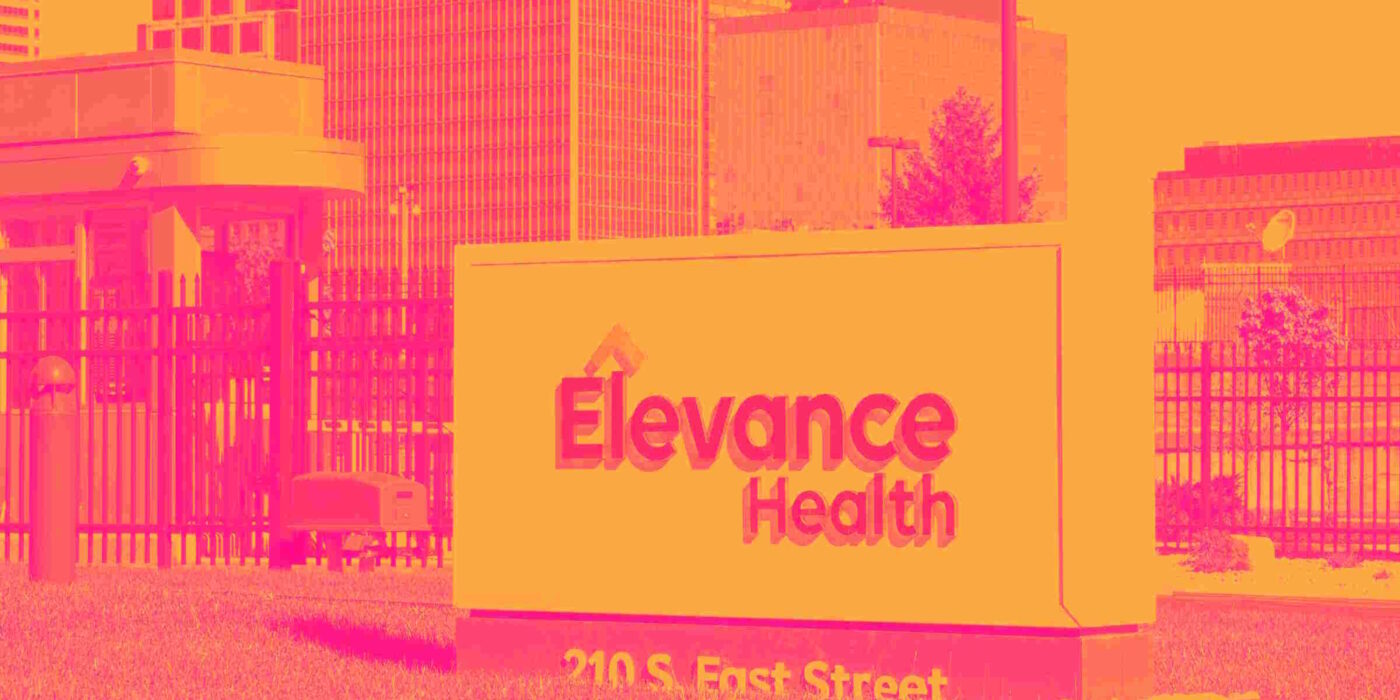
Health insurance provider Elevance Health (NYSE: EVH) announced better-than-expected revenue in Q3 CY2025, with sales up 12.4% year on year to $50.71 billion. Its non-GAAP profit of $6.03 per share was 22% above analysts’ consensus estimates.
Is now the time to buy Elevance Health? Find out by accessing our full research report, it’s free for active Edge members.
Elevance Health (ELV) Q3 CY2025 Highlights:
- Revenue: $50.71 billion vs analyst estimates of $49.93 billion (12.4% year-on-year growth, 1.6% beat)
- Adjusted EPS: $6.03 vs analyst estimates of $4.94 (22% beat)
- Adjusted EBITDA: $1.65 billion vs analyst estimates of $2.25 billion (3.3% margin, 26.6% miss)
- Management reiterated its full-year Adjusted EPS guidance of $30 at the midpoint
- Operating Margin: 2.8%, down from 4.3% in the same quarter last year
- Free Cash Flow Margin: 1.5%, down from 5.2% in the same quarter last year
- Customers: 45.37 million, down from 45.62 million in the previous quarter
- Market Capitalization: $79.73 billion
"Our third quarter results were in line with expectations and reflect disciplined execution across Elevance Health. In a dynamic healthcare environment, we’re focused on advancing affordability and elevating the member experience through our growing value-based care partnerships and AI-enabled digital solutions that simplify access and improve outcomes. As we plan for 2026, we remain disciplined in managing what we can control – positioning our businesses for long-term, sustainable growth and value creation for all stakeholders.”
Company Overview
Formerly known as Anthem until its 2022 rebranding, Elevance Health (NYSE: ELV) is one of America's largest health insurers, serving approximately 47 million medical members through its network-based managed care plans.
Revenue Growth
A company’s long-term sales performance can indicate its overall quality. Any business can have short-term success, but a top-tier one grows for years. Over the last five years, Elevance Health grew its sales at a decent 10.6% compounded annual growth rate. Its growth was slightly above the average healthcare company and shows its offerings resonate with customers.
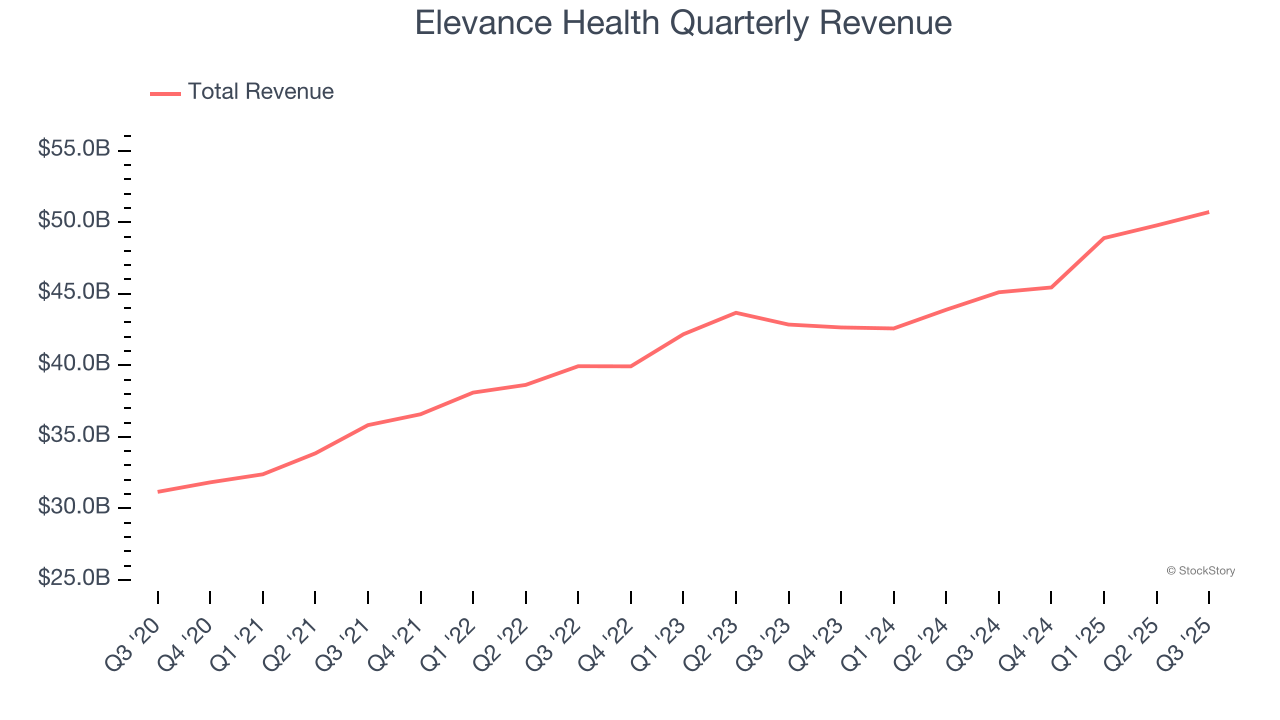
We at StockStory place the most emphasis on long-term growth, but within healthcare, a half-decade historical view may miss recent innovations or disruptive industry trends. Elevance Health’s recent performance shows its demand has slowed as its annualized revenue growth of 7.5% over the last two years was below its five-year trend. 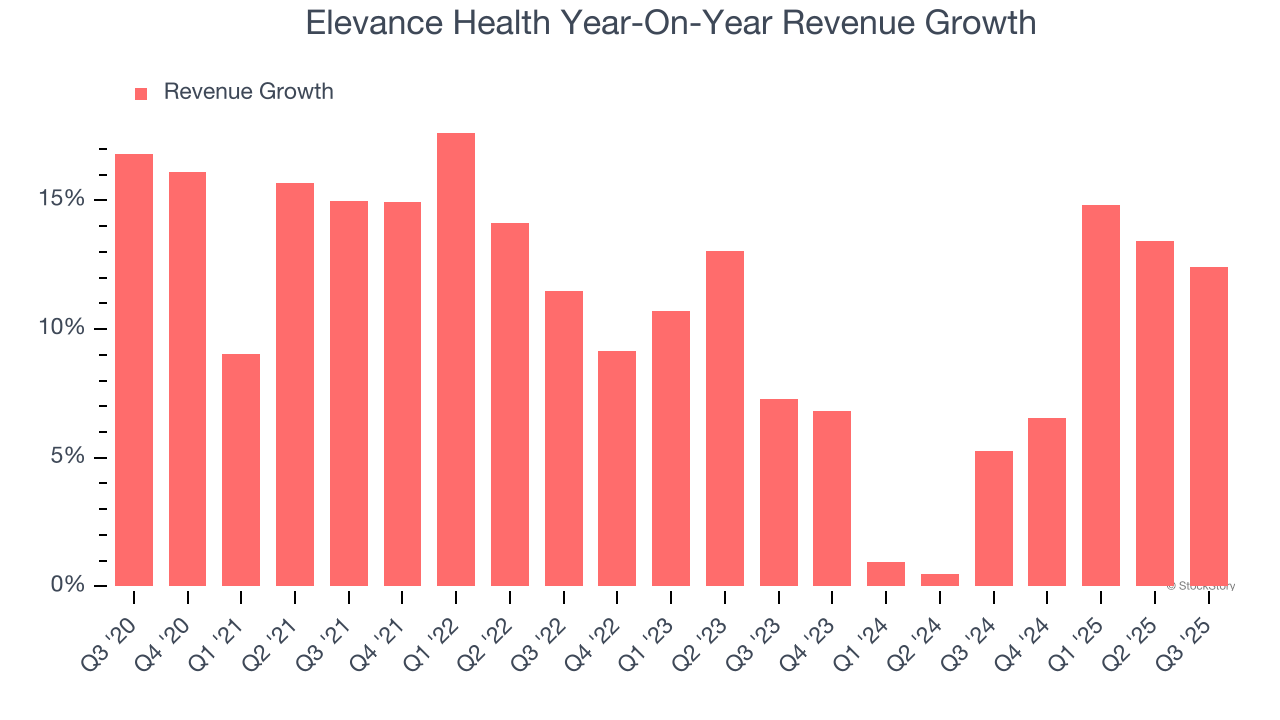
We can better understand the company’s revenue dynamics by analyzing its number of customers, which reached 45.37 million in the latest quarter. Over the last two years, Elevance Health’s customer base averaged 2.2% year-on-year declines. Because this number is lower than its revenue growth, we can see the average customer spent more money each year on the company’s products and services. 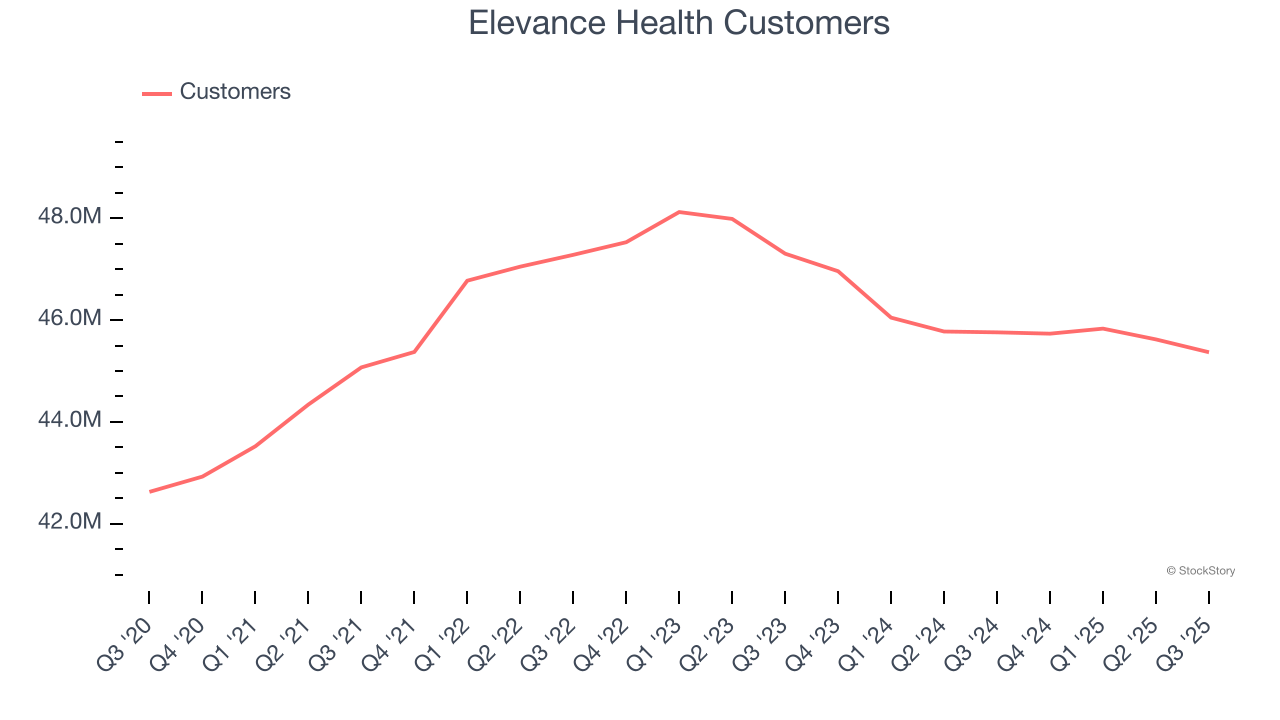
This quarter, Elevance Health reported year-on-year revenue growth of 12.4%, and its $50.71 billion of revenue exceeded Wall Street’s estimates by 1.6%.
Looking ahead, sell-side analysts expect revenue to grow 5.8% over the next 12 months, a slight deceleration versus the last two years. We still think its growth trajectory is satisfactory given its scale and implies the market sees success for its products and services.
Here at StockStory, we certainly understand the potential of thematic investing. Diverse winners from Microsoft (MSFT) to Alphabet (GOOG), Coca-Cola (KO) to Monster Beverage (MNST) could all have been identified as promising growth stories with a megatrend driving the growth. So, in that spirit, we’ve identified a relatively under-the-radar profitable growth stock benefiting from the rise of AI, available to you FREE via this link.
Operating Margin
Operating margin is a key measure of profitability. Think of it as net income - the bottom line - excluding the impact of taxes and interest on debt, which are less connected to business fundamentals.
Elevance Health was profitable over the last five years but held back by its large cost base. Its average operating margin of 5.7% was weak for a healthcare business.
Looking at the trend in its profitability, Elevance Health’s operating margin decreased by 1.8 percentage points over the last five years. The company’s two-year trajectory also shows it failed to get its profitability back to the peak as its margin fell by 1.8 percentage points. We still like Elevance Health but would like to see some improvement in the future.
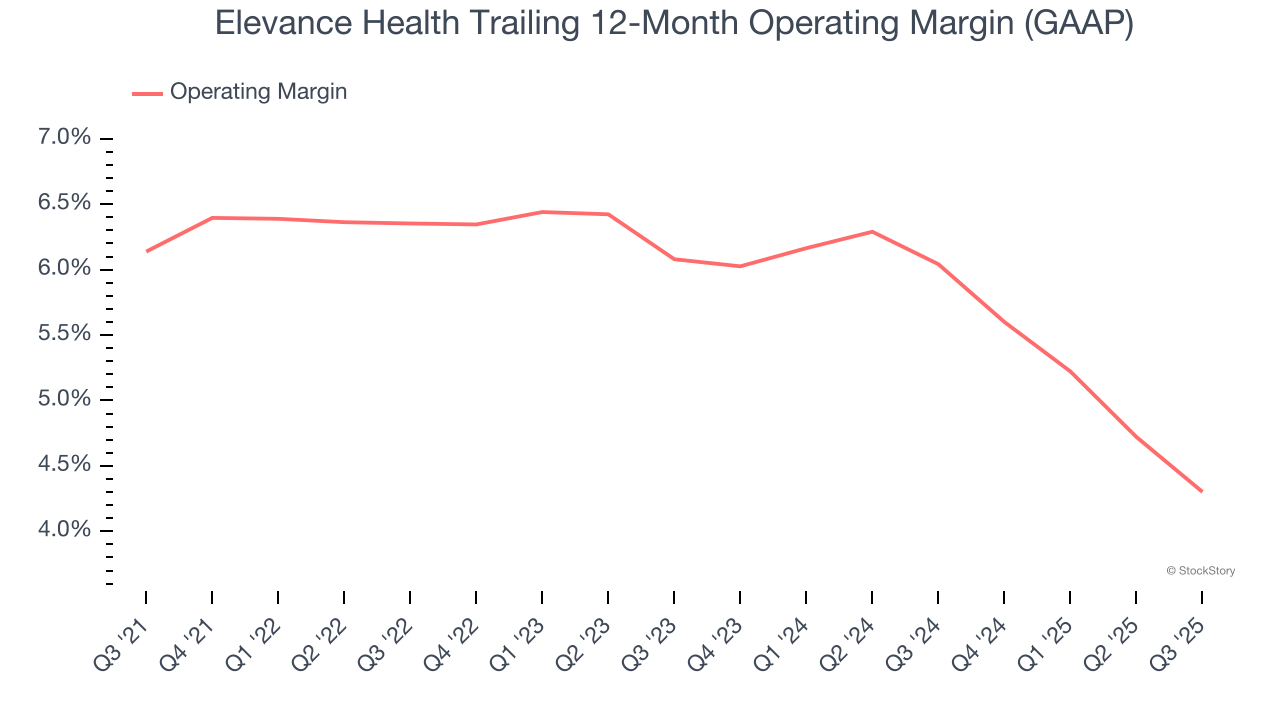
In Q3, Elevance Health generated an operating margin profit margin of 2.8%, down 1.6 percentage points year on year. This reduction is quite minuscule and indicates the company’s overall cost structure has been relatively stable.
Earnings Per Share
Revenue trends explain a company’s historical growth, but the long-term change in earnings per share (EPS) points to the profitability of that growth – for example, a company could inflate its sales through excessive spending on advertising and promotions.
Elevance Health’s EPS grew at a decent 5.2% compounded annual growth rate over the last five years. Despite its operating margin improvement and share repurchases during that time, this performance was lower than its 10.6% annualized revenue growth, telling us the delta came from reduced interest expenses or taxes.
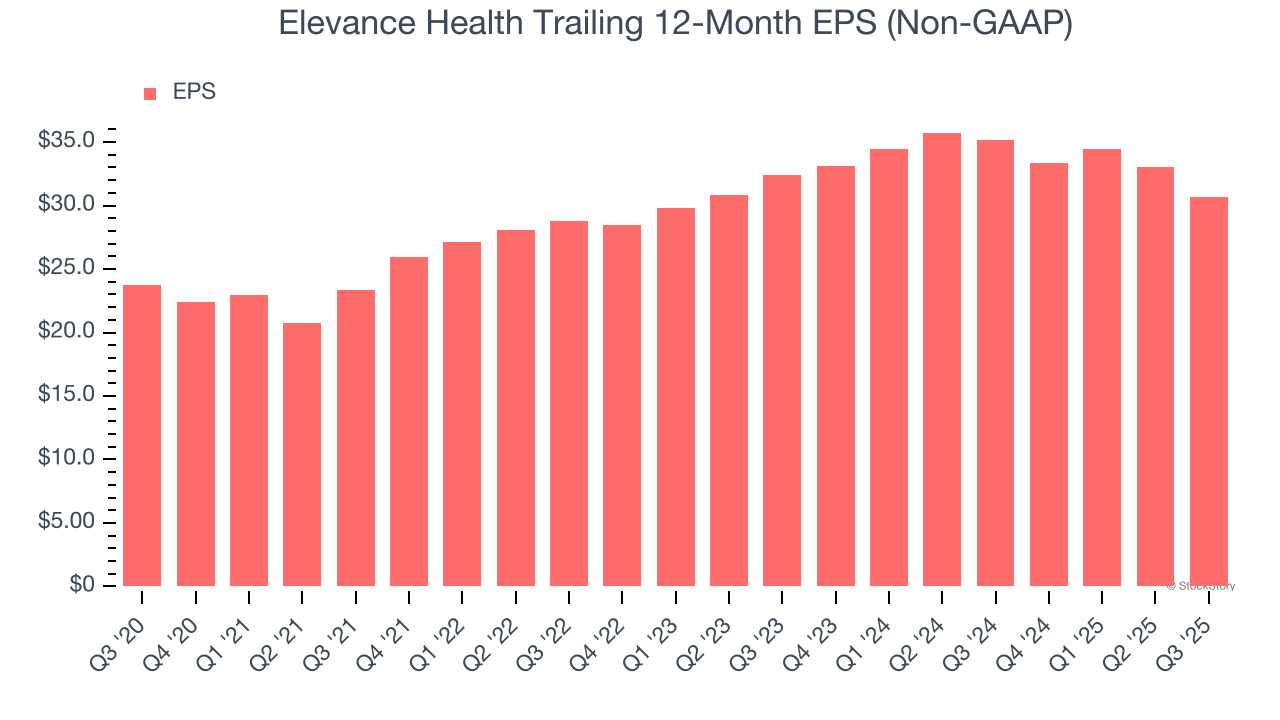
We can take a deeper look into Elevance Health’s earnings to better understand the drivers of its performance. As we mentioned earlier, Elevance Health’s operating margin declined by 1.8 percentage points over the last five years. This was the most relevant factor (aside from the revenue impact) behind its lower earnings; interest expenses and taxes can also affect EPS but don’t tell us as much about a company’s fundamentals.
In Q3, Elevance Health reported adjusted EPS of $6.03, down from $8.37 in the same quarter last year. Despite falling year on year, this print easily cleared analysts’ estimates. Over the next 12 months, Wall Street expects Elevance Health’s full-year EPS of $30.68 to stay about the same.
Key Takeaways from Elevance Health’s Q3 Results
It was good to see Elevance Health beat analysts’ EPS expectations this quarter. We were also happy its revenue outperformed Wall Street’s estimates. On the other hand, its customer base slightly missed. Overall, this print had some key positives. The stock traded up 5.9% to $374.80 immediately after reporting.
Elevance Health had an encouraging quarter, but one earnings result doesn’t necessarily make the stock a buy. Let’s see if this is a good investment. The latest quarter does matter, but not nearly as much as longer-term fundamentals and valuation, when deciding if the stock is a buy. We cover that in our actionable full research report which you can read here, it’s free for active Edge members.






